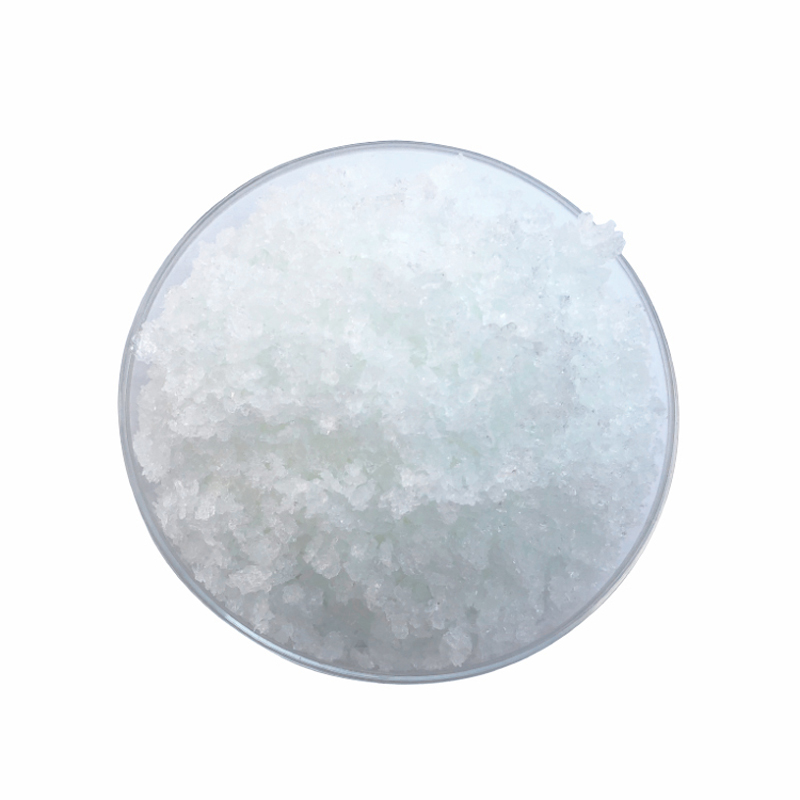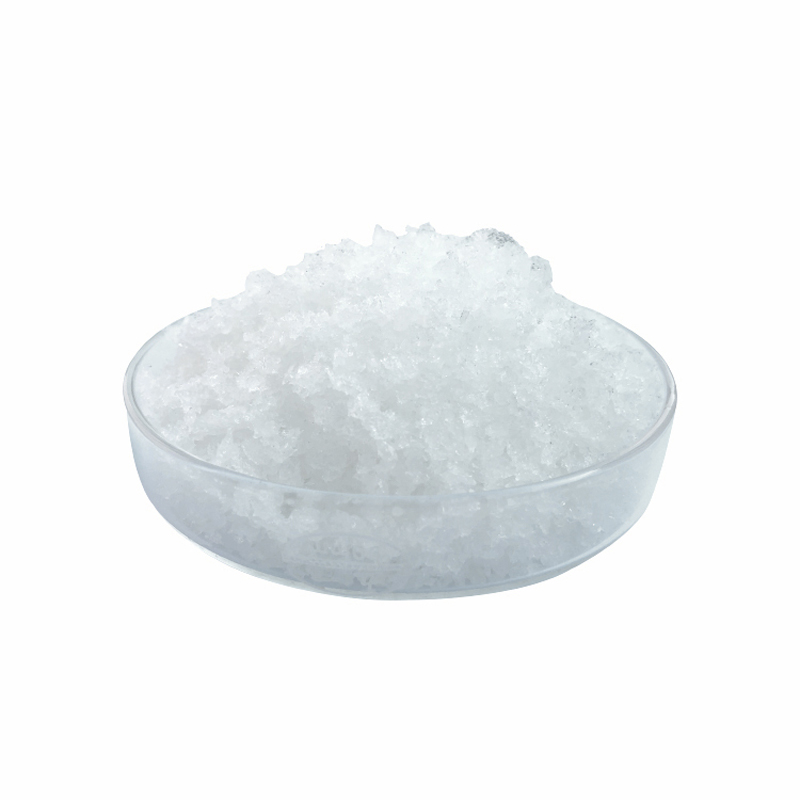A study recently published in the journal Nanomanufacturing examines the cytotoxicity and biocompatibility of cerium oxide (CeO2) nanoparticles for use in different applications such as fuel cells, cancer treatment, auto-exhaust catalysts, and biosensors.
Study: Cerium Oxide Nanoparticles: Synthesis and Characterization for Biosafe Applications. Image Credit: Kateryna Kon/Shutterstock.com Lanthanum (III) Chloride

Cerium oxide has received a lot of interest in recent years owing to its unique physical and chemical features. However, extensive use has resulted in their leakage into the ecosystem, where human exposure can cause serious health issues.
Cerium is a rare earth metal that combines with oxygen to produce cerium oxide nanoparticles with a crystalline structure. Cerium oxide nanoparticles exhibit excellent antioxidant characteristics because of the redox cycling between the two active states of cerium, 3+ and 4+.
Due to a large number of oxygen-containing functional groups in CeO2 nanoparticles, they can operate as an electrolyte in supercapacitors, as well as in nanomaterial applications such as fuel cells, rust inhibitors, and catalytic converters.
Scanning Electron Microscopy (SEM) image representing the particle distribution of cerium oxide nanoparticles. Image Credit: Tumkur, P. et al.
CeO2 nanoparticles are used for a wide variety of applications in the healthcare industry as well.
When tested against several types of bacteria, these rare earth nanoparticles (nanoceria) showed a significant antibacterial impact. In addition to their natural ability to change oxidation states, CeO2 nanoparticle can also protect healthy cells from oxidative damage.
Furthermore, cerium oxide nanoparticles can function as synthetic oxidative electrocatalysts with observable central nervous system (CNS) penetrance, sustained preservation, and restorative catalytic properties.
Continuous, frequent use of these nanomaterials has resulted in their constant discharge into the atmosphere, where human exposure can cause severe health issues. Therefore, toxicity and biosafety evaluation are crucial before their widespread use in industrial applications increases.
The published data on the toxicity and biosafety of cerium oxide nanoparticles is inconsistent. Several papers have commented on the low toxicity and anti-inflammatory properties of CeO2 nanoparticles.
On the other hand, harmful consequences of cerium oxide nanoparticles have also been described, including cell death. Harmful impacts were shown to be due to the formation of reactive oxygen species (ROS), which can induce cellular damage and eventually result in the initiation of cell death.
Interestingly, it has also been shown that cerium oxide nanoparticles display either antioxidant or pro-oxidative characteristics.
Energy Dispersive X-ray Spectroscopy (EDX) image representing the elemental composition in cerium oxide nanoparticles. Image Credit: Tumkur, P. et al.
In this study, the researchers employed a hydroxide-mediated methodology to synthesis cerium oxide nanoparticles, and characterization techniques such as SEM, EDX, and XRD, among others, were employed to investigate their characteristics.
Live/Dead cell assays and Reactive Oxygen Species (ROS) assays were used to evaluate the toxicity and cytocompatibility of CeO2 nanoparticles.
A straightforward synthesis procedure was used. In a beaker, a 0.1 M cerium nitric acid solution was agitated, and a 0.3 M sodium hydroxide solution was poured into it. This mixture was then centrifuged for 15 minutes at 8000 revolutions per minute to get the sediment to settle at the bottom.
The cerium oxide nanoparticles were obtained by depositing the sediment on a glass plate and drying it in a warm air vacuum furnace at 200 degrees Celsius.
The cerium oxide nanoparticles were produced effectively using a hydroxide-treatment method, yielding pale-yellow nanostructures.
SEM established the crystal size to be in the range of 10 to 30 nm, and EDX confirmed the crystalline phase of the nanoparticles to be free of any extraneous contaminants.
The existence of cerium oxide nanoparticles was established using FTIR, whereas the crystalline composition of the nanoparticles was established by the XRD results.
Tests utilizing Beas-2B cells in the MTT, Live/Dead survivability, and ROS assays revealed that the cerium oxide nanoparticles are sustainable with the cells, with no cell damage even at very high concentrations.
X-ray Diffraction Spectroscopy (XRD) spectrum representing the crystal planes corresponding to the crystal structure of CeO2. Image Credit: Tumkur, P. et al.
The findings show that the cerium oxide nanoparticles can be employed in multiple medical applications, including biosensors and cancer treatment.
The filtration and absorption capabilities of CeO2 nanoparticles are useful for products like catalytic converters and sunblock. Cerium oxide nanoparticles can also be used for drug delivery because of their tiny size, which allows them to pass through cell membranes.
Continue reading: An Overview of Gold Thin Films: From Sensors to Cell Culture.
Tumkur, P. et al. (2021) Cerium Oxide Nanoparticles: Synthesis and Characterization for Biosafe Applications. Nanomanufacturing, 1(3), 176-189. Available at: https://www.mdpi.com/2673-687X/1/3/13
Disclaimer: The views expressed here are those of the author expressed in their private capacity and do not necessarily represent the views of AZoM.com Limited T/A AZoNetwork the owner and operator of this website. This disclaimer forms part of the Terms and conditions of use of this website.
Hussain graduated from Institute of Space Technology, Islamabad with Bachelors in Aerospace Engineering. During his studies, he worked on several research projects related to Aerospace Materials & Structures, Computational Fluid Dynamics, Nano-technology & Robotics. After graduating, he has been working as a freelance Aerospace Engineering consultant. He developed an interest in technical writing during sophomore year of his B.S degree and has wrote several research articles in different publications. During his free time, he enjoys writing poetry, watching movies and playing Football.
Please use one of the following formats to cite this article in your essay, paper or report:
Ahmed, Hussain. (2021, December 06). Potential Biosensor and Cancer Applications of Cerium Oxide Nanoparticles. AZoNano. Retrieved on January 23, 2024 from https://www.azonano.com/news.aspx?newsID=38312.
Ahmed, Hussain. "Potential Biosensor and Cancer Applications of Cerium Oxide Nanoparticles". AZoNano. 23 January 2024. <https://www.azonano.com/news.aspx?newsID=38312>.
Ahmed, Hussain. "Potential Biosensor and Cancer Applications of Cerium Oxide Nanoparticles". AZoNano. https://www.azonano.com/news.aspx?newsID=38312. (accessed January 23, 2024).
Ahmed, Hussain. 2021. Potential Biosensor and Cancer Applications of Cerium Oxide Nanoparticles. AZoNano, viewed 23 January 2024, https://www.azonano.com/news.aspx?newsID=38312.
Do you have a review, update or anything you would like to add to this news story?
We speak with Professor Hongxia Wang from QUT about a new project that hopes to utilize graphene and other low-cost carbon materials to produce commercially viable, ultra low-cost, flexible perovskite solar cells.
Moti Segev & Vlad Shalaev
In this interview, AzoNano speaks to Professor Moti Segev and Professor Vladimir Shalaev, who made surprising discoveries about photonic time crystals that challenge existing research and theories.
In this interview, we discuss a new approach to surface-enhanced Raman spectroscopy that utilizes nano-pockets to capture target molecules, ensuring a highly sensitive way to detect chemical processes.
The Asylum Research Jupiter XR Atomic Force Microscope from Oxford Instruments is the first and only large-sample AFM to offer both high-speed imaging and extended range in a single scanner.
This product profile describes the features and applications of the alpha300 Semiconductor Edition Raman microscope for chemical imaging.
This product profile from Merck outlines information about ultrastable fluorescent silica nanobeads.
AZoNano.com - An AZoNetwork Site

Lanthanum Acetate N-Hydrate Owned and operated by AZoNetwork, © 2000-2024